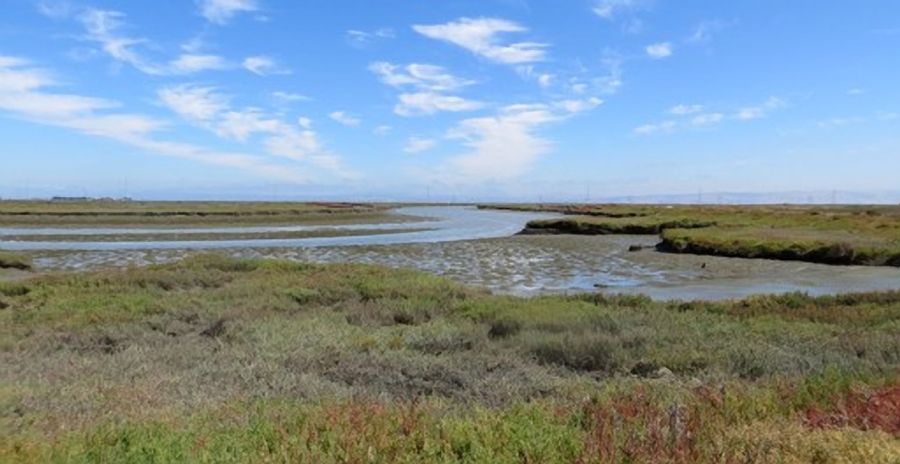Boyhood in Redwood City during the late 1920s was living the carefree life of Mark Twain’s Huckleberry Finn, according to a memoir left by a man who grew up to be more like Tom Sawyer. Francis Hutchinson, who passed away in 1989 after a long career in education, recounted a time when he fished within walking distance of his home, trekking to an area that today is the Bair Island wildlife refuge.
“The purpose of the fishing was its time honored challenge,” he wrote in the reminiscence that appeared in the Spring 2013 issue of the Journal of Local History published by the Archives Committee of the Redwood City Public Library. “It was also getting off by ourselves, where we could speak freely, swim without a bathing suit and avoid any time-consuming activities our parents – loath to see us idle in the summer – might think up.”
The fish included perch, sharks and stingrays that were “heavy and getting them ashore took some effort for 12 year olds.” Teamwork was needed to bring the fish to land where they were “knocked on the head and admired.” The boys fished at two spots – Smith Slough and Smith’s Landing “even though the wharf structures had long since rotted and drifted away.”
Hutchinson, who retired as principal at Woodside High School, recalled how the boys in his neighborhood thought of the marshes as their own wilderness. The boys, who lived in the area known today as “Tank Park” because of the World War II tank that stands at the edge, crossed arid landscape to reach the tidelands, a trip usually spoken of as “going out to the creek,” pronounced as “gunowd’crick.”
This story was originally published in the February edition of Climate Magazine.
Archives committee member John Edmonds decided to publish Hutchinson’s essay because it reminded him of his own experiences as a youth who fished and explored in the creeks and marshes of San Francisco Bay.
“I have noted to people that at one time Redwood Creek came inland much farther than it does today,” Edmonds explained. “We used to throw rocks about the size of our fists into the creek mud and watch the oysters squirt. Sometimes they got really high.”
The oyster beds were the work of entrepreneur John Stilwell Morgan, a former sea captain who formed the Morgan Oyster Company in 1887 and planted oysters in the mud of three Redwood City creeks and Greco Island, just east of the docks of the Port of Redwood City. According to Edmonds, Morgan lived in a house at the junction of Steinberger and Corkscrew creeks. Over time, Morgan’s oyster beds ranged between San Bruno all the way south to Alviso on the tip of San Francisco Bay.
Codfish was also a big business in Redwood City when Hutchinson and his friends frolicked in the mud, which he recalled did not please their mothers. One pal’s grandfather worked at the cod fishery located at the mouth of Redwood Creek “and from him we got the heavy fishing lines and big hooks used by commercial fishermen in the Gulf of Alaska.”
According to Edmonds, the Alaska Codfish Company’s Redwood City plant consisted of 30 buildings on Greco Island along with six Alaska trawlers that each year brought in 3,000 tons of fish that were cleaned, chopped, packed in cans and sold to wholesalers. The processing was done by women workers in what seems reminiscent of a chapter from John Steinbeck’s “Cannery Row,” the Monterey novel set during the Great Depression. The women, who boarded boats during the dark morning hours, were taken to the island where they remained until the catch of the day was canned.
Tastes change. The demand for codfish dried up after World War I and the boats of the Alaska Codfish Company sat idle at the docks. In 1921 a fire broke out on the vessels and rapidly spread to the buildings ashore. Arson was suspected, Edmonds wrote in an article for the Journal of Local History. “There were no fire department boats in those days so the plant was left to burn down” which took several days.






